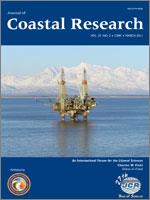As an island nation with some 85% of the population residing within 50 km of the coast, Australia faces significant threats into the future from sea level rise. Further, with over 710,000 addresses within 3 km of the coast and below 6-m elevation, the implication of a projected global rise in mean sea level of up to 100 cm over the 21st century will have profound economic, social, environmental, and planning consequences. In this context, it is becoming increasingly important to monitor trends emerging from local (regional) records to augment global average measurements and future projections. The Australasian region has four very long, continuous tide gauge records, at Fremantle (1897), Auckland (1903), Fort Denison (1914), and Newcastle (1925), which are invaluable for considering whether there is evidence that the rise in mean sea level is accelerating over the longer term at these locations in line with various global average sea level time-series reconstructions. These long records have been converted to relative 20-year moving average water level time series and fitted to second-order polynomial functions to consider trends of acceleration in mean sea level over time. The analysis reveals a consistent trend of weak deceleration at each of these gauge sites throughout Australasia over the period from 1940 to 2000. Short period trends of acceleration in mean sea level after 1990 are evident at each site, although these are not abnormal or higher than other short-term rates measured throughout the historical record.
BioOne.org will be down briefly for maintenance on 17 December 2024 between 18:00-22:00 Pacific Time US. We apologize for any inconvenience.
How to translate text using browser tools
1 March 2011
Is There Evidence Yet of Acceleration in Mean Sea Level Rise around Mainland Australia?
P. J. Watson
ACCESS THE FULL ARTICLE

Journal of Coastal Research
Vol. 27 • No. 2
March 2011
Vol. 27 • No. 2
March 2011
Acceleration
Australasia
Relative sea level rise




